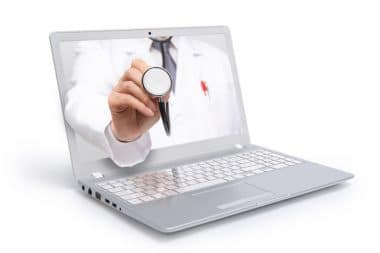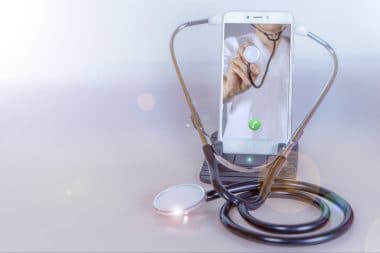Telehealth has been practiced since a few decades ago. However, the use of this virtual medical service use has only increased dramatically at the height of the COVID-19 pandemic.
From patient diagnosis to managing health various health concerns, to providing education between and among health practitioners and the public, telehealth has proven to be highly beneficial in the fight against the deadly virus.
But what is telehealth and how is it changing the landscape of how health services are being administered? And how is it being used to combat the further spreading of the pandemic? Let’s find out.
What is telehealth?
This term is a catch-all phrase used to describe a broad range of activities that cover the provision of medical and health services. Therefore, it doesn’t only cover online consultations and patient communication in the field of dentistry, occupational therapy, counselling, chronic disease monitoring and management, but education as well.
This means that telehealth is the end-all and be-all of online delivery of health and medical services as well as information exchange. In order to make these services more effective and efficient, healthcare practitioners rely on four basic methods:
1. Video Teleconferencing
Instead of face-to-face meetings, telehealth makes remote health monitoring, management, and consultations, easier. Because communication is real-time and accompanied by visual observation, it can already substitute for in-person encounters.
2. Store and Forward
This refers to the transmission and receipt of any medical information in digital format. These data may be digital images, recorded videos, and documents that can be exchanged between and among medical specialists for better diagnosis and case management. The professionals are, of course, guided by the local laws on the practice of confidentiality of medical information.
3. Remote Patient Monitoring
Telehealth can solve a multitude of health-related concerns, including the management of chronic pain in patients highly vulnerable to COVID-19. With telehealth, the collection of health data can be done even without clinical visits, only virtual interactions.
For instance, a patient may be asked to wear an internet-connected health band to take and transmit vital signs such as heart and pulse rates, blood pressure, oxygen levels, blood sugar levels, and weight. Some health devices can take electrocardiograms. These types of medical information can now be used to monitor patients and provide the necessary interventions, as needed.
4. Mobile Health
Making the public aware of any important health information such as the COVID-19 pandemic and other health reminders is another critical feature of telehealth. Public health and disease control specialists can reach out to individuals via targeted text messaging to remind them about prevention and other self-mitigating measures.
The Benefits of Using Telehealth During the Pandemic
1. Increasing Health Service Capacities
Because of the dire lack of hospital beds, movement restrictions and the fear of contracting the virus, telehealth services surged worldwide. In highly advanced countries like the United States, Canada, Germany, telehealth services, mainly teleconsultation, has reportedly increased more than tenfold.
Moving toward the Asia Pacific region where Australia is the leading medical giant and telehealth veteran, the Australian Telehealth Services is being used extensively to manage patients with chronic diseases, provide counselling, and dispense treatments remotely. Even healthcare professionals who have been infected by the virus and are under quarantine can continue to work, thanks to telehealth.
Steps like these are extremely important in ensuring that the healthcare system won’t bog down despite the increasing COVID-19 cases.
2. Controlling the Spread of the COVID-19 Virus
Because of virtual consultations, patients no longer need to expose themselves by going to the clinic and meeting others who are potentially infected by the virus. COVID-19 has an incubation period, and during this time an infected person does not necessarily have to show or experience symptoms but can already infect others.
Teleconsultation is not the only means of preventing the spread of the virus. Virtual disease management and prevention has been helpful in reducing the number of infections to a certain degree. Telehealth has been very useful in providing continuing care to the most vulnerable sectors, including the elderly, persons with co-morbidities, and patients with special health and mental needs.
3. Reducing Pressure on Healthcare Workers
Anywhere around the world, but most especially in population-intensive nations, the healthcare system is continuously drained by the high number of individuals infected with COVID-19. There is a prevalent need for medical facilities and manpower to expand just to keep up with the needs.
In countries hardly hit by the virus, telehealth has helped by allowing suspected cases, and mild to asymptomatic COVID-19 patients to stay in their homes or be placed in isolation centers while being monitored remotely by physicians. In this manner, only patients with moderate to severe or serious cases are placed in hospitals. While this provides a temporary solution to overworked and exhausted healthcare professionals, it’s still a solution, nevertheless.
In the US where COVID-19 cases were the highest in the world for several months, the use of telehealth has been strengthened even to patients in the intensive care unit (ICU). At the height of the pandemic, an estimated 11% of ICU beds were under remote monitoring. This, among other factors, has prevented the US healthcare system from bowing down to the intense pressure of having high infection rates.
4. Enhancing Public Awareness on COVID-19 and Other Updates
This is where education and awareness become detrimental, especially as the world grapples with the deadly virus. In some remote areas where healthcare services are not a common fare, it helps for a country to establish an alert or notification system to inform its citizens about the modes of transmission of COVID-19, as well as the provide points on how to prevent it from spreading.
This is apart from the informational drives and campaigns launched by the government to increase awareness on COVID-19 matters.
5. Ensuring COVID-19 Patient Management Even in Remote Areas
One of the more useful ways that telehealth can help fight the deadly virus is through an exchange of information and health management training between a specialist and a neophyte doctor. On one hand, telehealth ensures that health services are not disrupted because of the pandemic, and on the other; that management of COVID-19 patients in remote areas are monitored by specialists.
The Bottom Line
All of the players in the health care industry should work synergistically to continue the telehealth expansions triggered by the COVID-19 pandemic. From increasing medical access, enhancing diagnostic and patient care management, to improving workers’ productivity, telehealth has helped change the way medical and healthcare services are delivered; especially to the most vulnerable.
However, remote provision of medical services can only do so much, and increasing the capacities of healthcare facilities should still be the priority, when the pandemic is over.








Reply